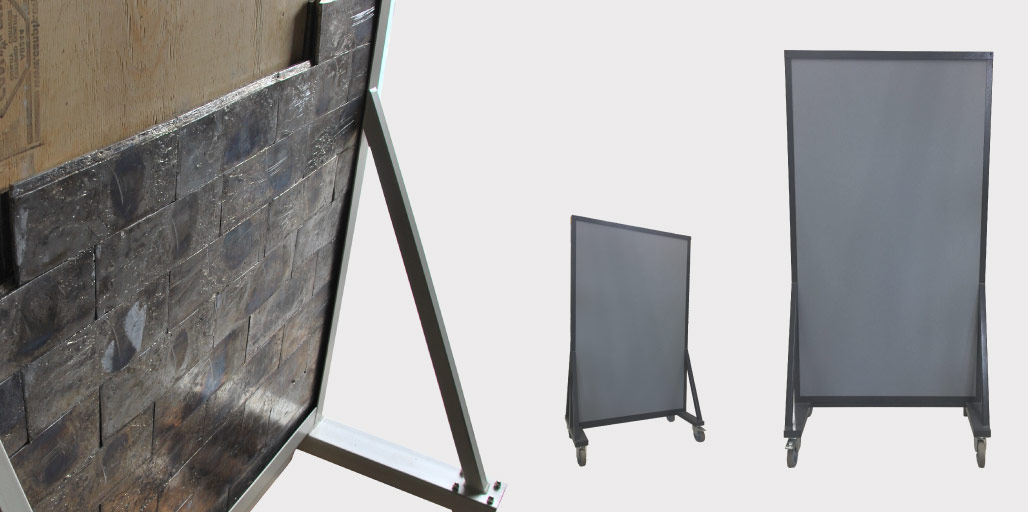You’ve decided to purchase X-ray equipment and the next step is building an X-ray room. Since an X-ray room is designed to be a safe place for patients, lead lining the walls is the first step in reducing radiation exposure.
During this process, you’ll have to determine how much lead shielding is needed, the associated costs, and where you’ll buy it. In this article, we’ll go over what lead lining is, why it’s required, and the best places to source it.
What is Lead Shielding?
Lead is a dense, heavy metal that absorbs and attenuates radiation, which makes it an ideal material for shielding. It can block or reduce the penetration of gamma rays, X-rays, and other forms of ionizing radiation.
Lead shielding refers to the use of lead or lead-based materials to protect from radiation exposure. It’s available in different forms that include (but are not limited to):
- Lead sheets
- Lead-lined drywall
- Lead bricks
- Lead glass
- Lead aprons
Even lead curtains are a form of lead shielding. The shielding material you choose depends on the specific application, the required level of protection, and the radiation source.
Lead shielding is an essential component of radiation safety measures and is regulated by national standards. The configuration and thickness of lead shielding are determined based on factors like the distance from the source, energy and intensity of the radiation source, and the permissible radiation exposure limits.
To provide adequate radiation protection, lead shielding must be properly designed, installed, and maintained. It’s important to consult with radiation physicists, medical professionals, and radiation safety officers to ensure compliance with regulations and safety standards.
What is in a Lead-Lined X-ray Room?
In the context of an X-ray room, lead shielding is used to prevent the leakage of radiation to adjacent areas. The doors, windows, walls, and other structural elements are lined and reinforced with lead, preventing radiation from escaping the room, while minimizing exposure to patients, personnel, and the general public.
A lead-lined X-ray room typically includes:
- Lead-lined door
- Lead-lined windows
- Lead shielding on the walls, floor, and ceiling
Lead-lined X-ray rooms are commonly found in hospitals, dental offices, chiropractors, podiatrists, urgent cares, veterinary practices, and other healthcare facilities where X-ray equipment is kept.
In order to determine your exact need, you must start with a lead shielding physicist report. This will break down how much lead is required to ensure patient and personnel safety.
The Importance of Lead Shielding
Lead shielding is important due to its ability to attenuate radiation. There are several reasons why it’s crucial for an X-ray room, including:
Safety
Lead shielding benefits anyone involved in the X-ray process.
Healthcare professionals who work in X-ray rooms are at risk for prolonged exposure. Incorporating lead shielding into an X-ray room’s structure ensures staff is insulated from unnecessary radiation exposure. It also reduces the potential for long-term health risks associated with radiation.
Lead shielding is also essential for protecting patients undergoing X-ray procedures. A patient’s vital organs and tissues can be shielded from radiation. It also minimizes the potential for radiation-related side effects or complications.

Compliance
National and international regulatory bodies, like the International Atomic Energy Agency (IAEA) and the National Council on Radiation Protection and Measures (NCRP), will provide standards and guidelines for radiation protection in medical facilities.
Regulations of this sort often stipulate the use of lead shielding to ensure compliance and maintain a safe and secure environment for everyone involved.
Control
Lead shielding is designed to help control radiation leakage. X-rays can scatter and may leak outside the intended imaging space, particularly at higger energy levels.
Implementing lead shielding ensures this runoff radiation is contained. This minimizes the risk of exposure to individuals in adjacent areas and neighboring rooms.
Where to Buy Lead Shielding
When purchasing lead shielding, it’s vital to consider factors like the intended application, required thickness and size, and compliance with relevant standards or regulations. Make sure the supplier you choose has a good reputation, offers strong customer support, and provides a quality product.
Here are a few places to start when looking to buy lead shielding:
Medical Equipment Suppliers
There are local and online suppliers that specialize in medical equipment and radiation products. They offer lead shielding specifically designed for X-ray rooms. Some top providers include:
- MarShield
- NELCO Worldwide
- Ray-Bar Engineering
- Barrier Technologies
Construction Companies
There is a multitude of construction companies that are experienced in healthcare projects, radiation shielding installations, and medical facility construction. They can assist you with sourcing lead shielding materials (like lead-lined drywall) and with custom installations based on your specific requirements.

Radiation Safety Companies
There are also certain organizations that specialize in radiation safety and shielding. They can provide guidance on the appropriate materials and designs for your location. Two top brands in this space include MarShield and Radiation Protection Products (RPP).
Online Marketplaces
Another option for purchasing lead shielding is to check online marketplaces that cater to industrial or medical equipment. Websites like Alibaba, eBay, and Amazon all have listings for lead-shielding materials and lead-lined products.
However, you should also be careful. It’s important to verify the credibility and quality of the seller before buying anything.
Local Metal Suppliers
You can also explore local metal suppliers and fabricators in your area. They may be able to provide lead sheets or other lead products that can be used for shielding purposes. Keep in mind, you’ll still need to work with a radiation physicist or qualified professional to ensure proper design and installation.
Professional Consultation
Prior to purchasing anything for an X-ray installation, it’s incredibly important to consult with a radiation expert. They will help to ensure compliance with safety standards and regulations, as well as suggest the best source for purchasing your lead shielding.
Here at Maven Imaging, we can help you determine what types of lead products are needed, the costs involved with lead shielding, and the best places to find it.
Summing it Up
When it comes to purchasing lead shielding for an X-ray room, there are several options you can explore. Whether you choose to go local with a supplier or search an online marketplace, some due diligence and consulting with a professional is in order.
Remember, lead shielding for X-ray rooms requires careful consideration of factors like the thickness, configuration, and regulations specific to your area. If you’re not sure about specific laws in your area, it’s best to consult with a radiation safety officer before proceeding.
If you have any questions on X-ray equipment and how lead shielding works, we’d be more than happy to discuss them. Click here to request a quote.

